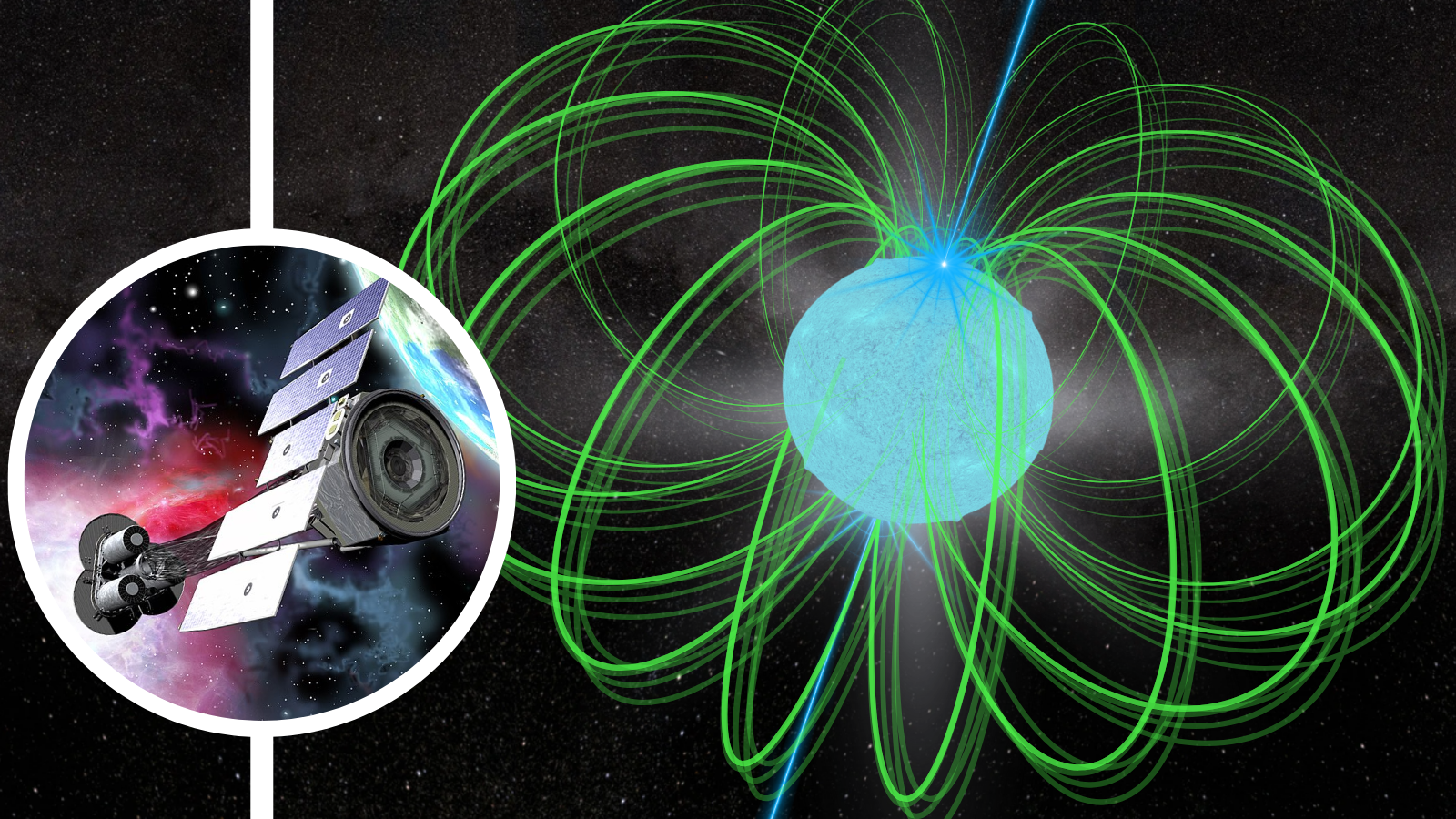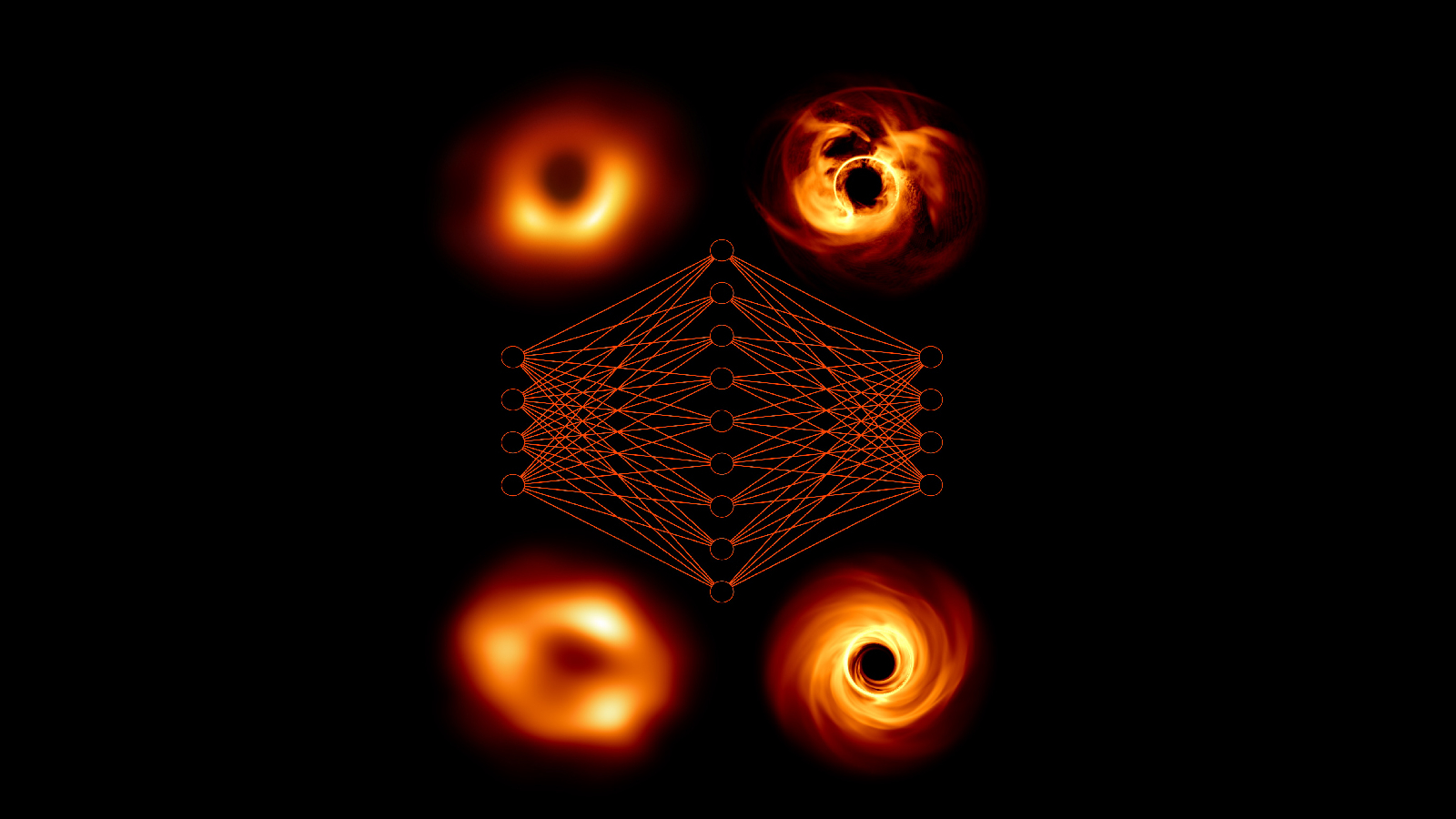Super-magnetic dead star throws a violent temper tantrum as NASA X-ray spacecraft looks on
"This is the first time we have been able to observe the polarization of a magnetar in an active state."

Using NASA's Imaging X-ray Polarimetry Explorer (IXPE) spacecraft, astronomers have made detailed observations of a highly magnetic dead star or "magnetar" as it threw a massive tantrum.
The observations mark the first time that the polarization of X-rays from a magnetar, neutron stars possessing the most powerful magnetic fields in the known universe, have been measured during an outburst or "activation phase."
The erupting magnetar observed by IXPE is known as 1E 1841-045, a neutron star located around 28,000 light-years from Earth in the supernova wreckage known as Kes 73, which shocked astronomers when it burst to life on Aug. 20, 2024.
"This is the first time we have been able to observe the polarization of a magnetar in an active state, and this has allowed us to constrain the mechanisms and geometry of emission that lie behind these active states," team leader and National Institute for Astrophysics (INAF) researcher Michela Rigoselli said in a statement.
"It will now be interesting to observe 1E 1841-045 once it has returned to its quiescent state to monitor the evolution of its polarimetric properties."
How magnetars become the universe's most extreme stars
Like all neutron stars, magnetars begin when the lives of stars with ten times the mass of the sun or greater run out of fuel for nuclear fusion. This ends the production of outward radiation pressure flowing from the cores of these stars that, for millions of years, has supported them against the inward pressure of their own gravity.
As a result of this, the cores of these massive stars crush down at a rapid rate, creating shock waves that ripple into the outer stellar layers of the star, triggering massive supernova explosions that send most of the mass of these stars hurtling into space, creating wreckage fields like Kes 73.
What is left behind is the core of the star, crushed down to a width of around 12 miles (20 kilometers) but with a mass between one and two times that of the sun. This leads to material filling the neutron star that is so dense that if a teaspoon of it were brought to Earth, it would weigh 10 million tons, about equal to 85,000 adult blue whales.
Breaking space news, the latest updates on rocket launches, skywatching events and more!

Another consequence of the collapse of the stellar core that births a neutron star is that the magnetic field lines of that star are squashed together. The closer together the magnetic field lines are, the stronger the magnetic field gets. As a result, neutron stars have the strongest magnetic fields in the known universe.
Magnetars take this to the extreme, possessing magnetic fields that are up to 1 trillion times stronger than Earth's magnetosphere. The magnetic environments around these stars are unlike anything found anywhere else in the universe and way beyond anything we could generate on Earth.
Astronomers can get hints about these magnetic fields and the environments around magnetars by measuring the organized orientation or "polarization" of light emitted from them.

Magnetars and the phenomena around them get even more extreme when they are in an active outburst phase. During these phases, magnetars can release as much as 1,000 times the energy they do when in a quiescent phase.
Yet astronomers still aren't clear on the mechanisms that ramp up this energy output. Observations like this one could help change that.
What this team found was that X-rays from 1E 1841-045 become increasingly polarized at higher energy levels. Yet the X-rays kept the same polarization angle throughout this ramping up of energy levels.
They reason that this means that the components behind the emissions are somehow connected. Additionally, the highest energy component, which is the most elusive and difficult to study, is strongly influenced by the magnetic field of the magnetar.
The team's research was published on Wednesday (May 28) in The Astrophysical Journal Letters.
Join our Space Forums to keep talking space on the latest missions, night sky and more! And if you have a news tip, correction or comment, let us know at: community@space.com.

Robert Lea is a science journalist in the U.K. whose articles have been published in Physics World, New Scientist, Astronomy Magazine, All About Space, Newsweek and ZME Science. He also writes about science communication for Elsevier and the European Journal of Physics. Rob holds a bachelor of science degree in physics and astronomy from the U.K.’s Open University. Follow him on Twitter @sciencef1rst.
You must confirm your public display name before commenting
Please logout and then login again, you will then be prompted to enter your display name.
